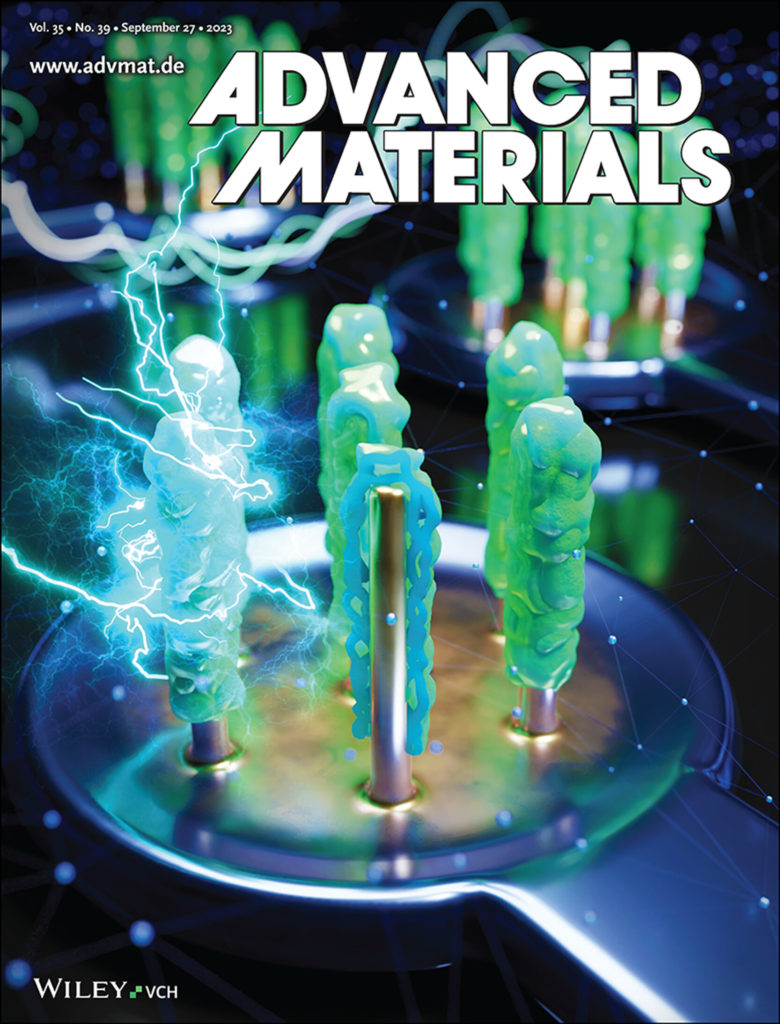NEUREKA consortium partners LAAS-CNRS recently published a new article in Advanced Materials about their work in NEUREKA.
Guilhem Larrieu and co-workers demonstrate a precision-controlled electrodeposition of PEDOT:PSS onto 3D nanowire electrodes, yielding remarkable improvements in electrochemical performance for neural interface applications. This nanoscale-controlled coating substantially reduces interface impedance and enhances stimulation capability compared with conventional metallic coatings.
The study is titled “Combining PEDOT:PSS Polymer Coating with Metallic 3D Nanowires Electrodes to Achieve High Electrochemical Performances for Neuronal Interfacing Applications” authored by Ines Muguet, Ali Maziz, Fabrice Mathieu, Laurent Mazenq and Guilhem Larrieu.
It is available for free at https://onlinelibrary.wiley.com/doi/10.1002/adma.202370281
Abstract:
This study presents a novel approach to improve the performance of microelectrode arrays (MEAs) used for electrophysiological studies of neuronal networks. The integration of 3D nanowires (NWs) with MEAs increases the surface-to-volume ratio, which enables subcellular interactions and high-resolution neuronal signal recording. However, these devices suffer from high initial interface impedance and limited charge transfer capacity due to their small effective area. To overcome these limitations, the integration of conductive polymer coatings, poly(3,4-ethylenedioxythiophene)-poly(styrenesulfonate) (PEDOT:PSS) is investigated as a mean of improving the charge transfer capacity and biocompatibility of MEAs. The study combines platinum silicide-based metallic 3D nanowires electrodes with electrodeposited PEDOT:PSS coatings to deposit ultra-thin (<50 nm) layers of conductive polymer onto metallic electrodes with very high selectivity. The polymer-coated electrodes were fully characterized electrochemically and morphologically to establish a direct relationship between synthesis conditions, morphology, and conductive features. Results show that PEDOT-coated electrodes exhibit thickness-dependent improved stimulation and recording performances, offering new perspectives for neuronal interfacing with optimal cell engulfment to enable the study of neuronal activity with acute spatial and signal resolution at the sub-cellular level.
The study made the cover of the October issue of Advanced materials!
Congratulations to the team at LAAS!
